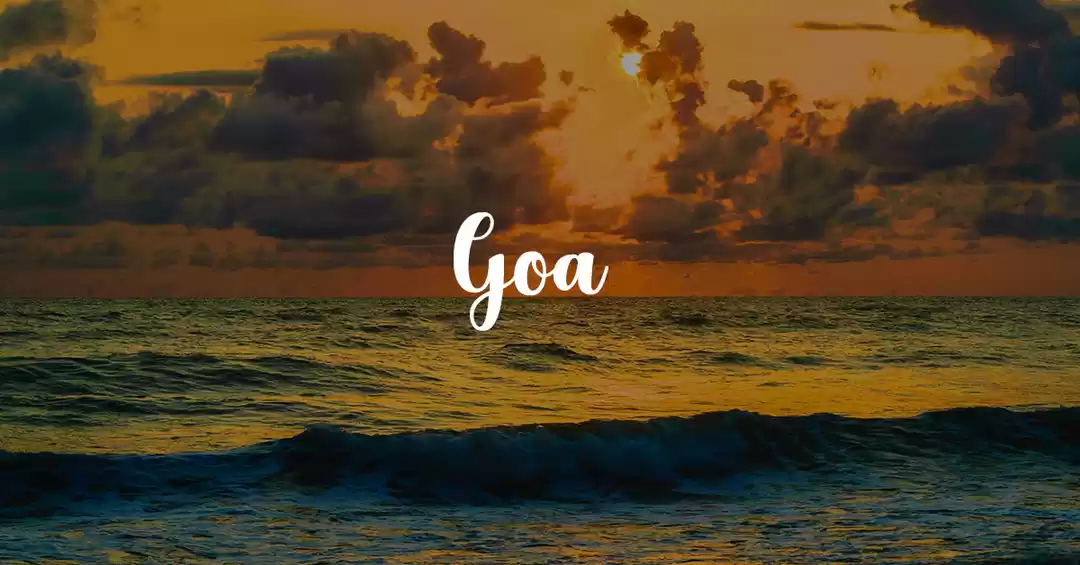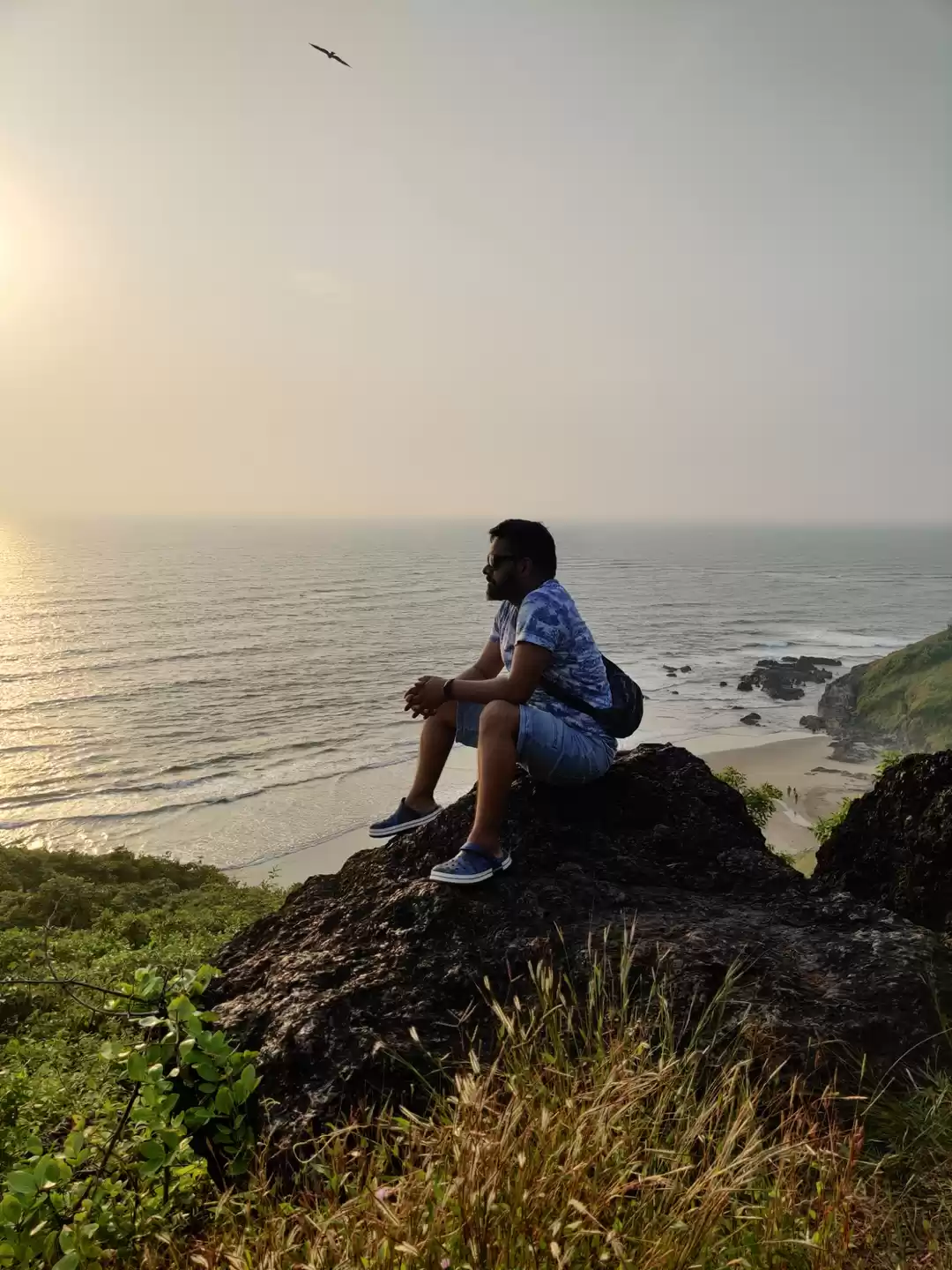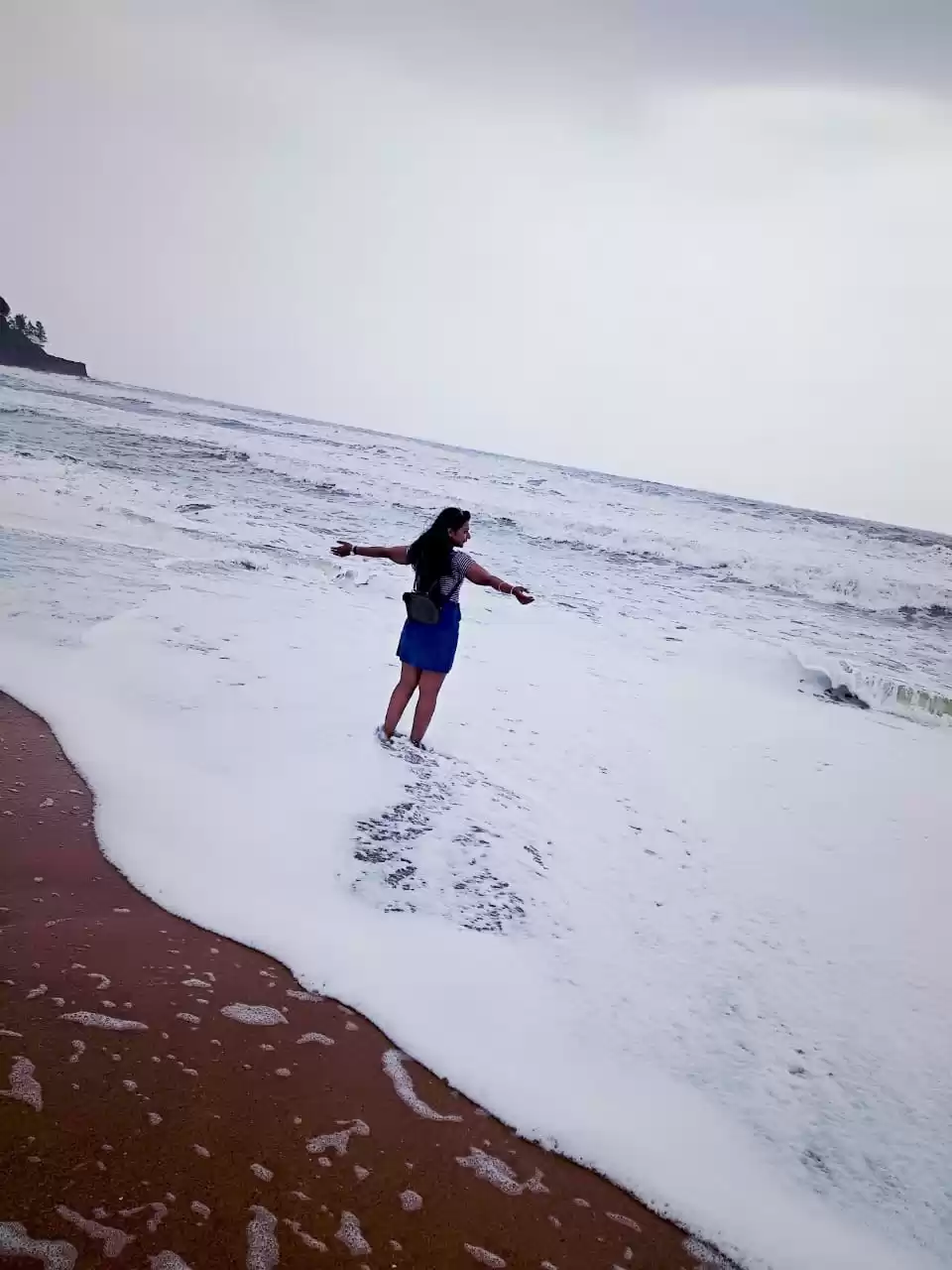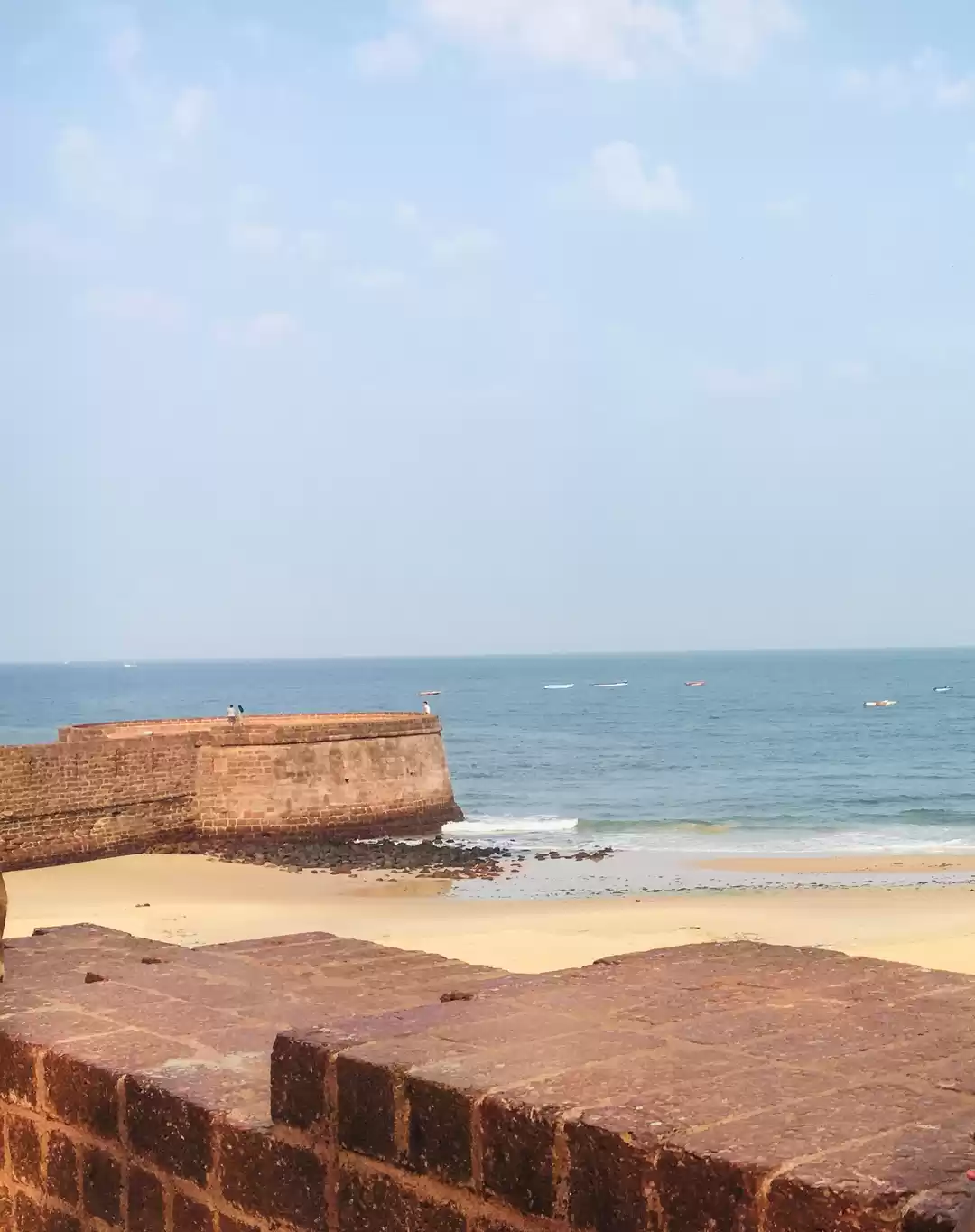In my opinion, it requires a full life time to completely explore India. So even though the smallest state of India, Goa too require at least a month to completely get acquainted with its multi diverse culture, cuisine, heritage, history, nightlife, wildlife and the most important, for which it is renowned the world over, its pristine beaches.
Goa becomes very beautiful in monsoon. Lush green all around and less crowded. Rains become very unpredictable. There is a continuous chase between the sun and the clouds. A game of hide and seek. Since dedicating a complete month in such a busy life of today is almost next to impossible, so I, with my wife, curtailed our excursion to Goa to a mere a week. After surfing the web extensively , we finally agreed to an itinerary. As from our city, no direct flight was available to Goa and we had only a week available, we decided to take a flight from New Delhi. As I saw the sea from my window of the plane, I was filled with excitement. During the landing, for the first time in my life, I saw a road intersecting the runway itself. We landed safely at Goa International Airport at Dabolim, Goa around 4:00 in evening. The Dabolim airport belongs to Indian Air Force, so clicking photograph was strictly prohibited, so we anyhow resisted our desire to click a few pictures, although the airport was very nice though not very big as IGI, New Delhi.
Day 1:
As we came out of the airport, a fresh moist breeze welcomed us. Mainly two types of tourists come to Goa. One, those who come on leisure vacations, in the search of peace and tranquillity. Usually they prefer to stay in south Goa. The other kind of tourists, mainly consist of young party animals, stay in north Goa. The airport is in southern part of Goa and since we had booked a resort in northern part, because that being more lively than the southern part, so after a little bargaining, we booked a cab to our resort. The distance from the airport to our resort was around 40 km. The zig-zag but very neat and clean road was passing through paddy fields, waving coconut trees and small colourful houses on the both sides. It took around one hour and twenty minutes to reach the resort. On the way, we also crossed the city of Panjim and Juari river.
After checking in, we sipped a cup of hot coffee for some instant energy. We were so eager to take the first glimpse of the sea, that, as soon as we finished our coffee, we headed straight to the Candolim beach, which was at a walking distance from our place of stay. We could smell the sea as we were approaching it. After walking for almost 10 minutes, we were standing on the beach. In front of us, there was rushing-gushing Arabian Sea, in all its intensity and glory, spreading till horizon. We were literally standing there speechless, overwhelmed and mesmerised, just looking at such a large water body, without even blinking our eyes. The sunset was just around the corner. The colours on the sky were just awesome.


We walked along the coastline hands in hands. It was the most memorable sunset of my life. The sand at Candolim beach was a bit coarse so after walking 1-2 km, the wet sand actually pedicured our feet. It was getting dark, the sea now looking fierce, also we were getting a bit hungry so we decided to return to our resort. Reaching our resort, we sat at the pool side and relaxed. After some time, we headed to the 'Earthen Oven' restaurant, which was around 100 mts from our resort.
The restaurant was very good, not much crowded and the best part was its cuisine. We ordered some north Indian dishes, which were really mouth watering. We had been tired till now, so we returned to the resort and slowly slid into dreams.
Day 2:
As we were staying in north Goa, so for the second day, we had already booked online, one day tour of south Goa, being organised by Goa Tourism Development Corporation (GTDC). The tour had to commence from Calangute Residency, a GTDC hotel at Calangute, which was around 5 km from our resort, so we took a cab to Calangute Residency. This hotel is a property of GTDC and situated at one of the most promising locations in Goa, right at the Calangute beach. Since we reached there early, so we utilised our time in having a heavy breakfast at Sagar Ratna, which is just opposite to Calangute Residency. Finally, when all fellow travellers arrived, the bus moved from Calangute Residency.
Our first destination was Abyss Marine Fish Aquarium, which was a private property. It houses many species of aquamarine creatures.
We next headed to the Basilica of Bom Jesus, which is an UNESCO World Heritage Site.
The basilica is said to hold the mortal remains of St. Francis Xavier. The church is located in Old Goa, also known as Velha Goa, which was the capital of Goa in the early days of Portuguese rule. It is said that the saint's body, which is kept in a well-decorated silver casket, is as fresh as the day of burial. The remains of the saint still attract a huge number of tourists from all over the world. There takes place a public viewing ceremony of his body, every ten year. This is one among the oldest churches in Goa and in India. It was built in 1605 A.D. The Basilica of Bom Jesus is more than 414 years old and is open to the public every day.
Our next stop was Se Cathedral, which was just opposite to the Basilica of Bom Jesus.
It is dedicated to Saint Catherine. The Se Cathedral was built to commemorate the victory of the Portuguese under Afonso de Albuquerque over a Muslim army, leading to the capture of the city of Goa in 1510. It was commissioned by Governor George Cabral to be enlarged in 1552 on the remains of an earlier structure. Construction of the church began in 1562 in the reign of King Dom Sebastião. The cathedral was completed in 1619 and was consecrated in 1640.

It had two towers, but one collapsed in 1776 due to a thunder storm and was never rebuilt. Adjacent to Se Cathedral, there is a convent and church of St. Francis of Assisi. It was made in 1660 and made up of laterite blocks. There is an ASI museum too, which opens from 9:00 A.M. to 5:00 P.M., Friday, being holiday.


We next moved to the ruins of the church of St. Augustine, which is also very close to Basilica of Bom Jesus. The church of St. Augustine was built in 1602. It consists of many chapels.

After that the tour took us to Colva beach, which is one of most famous, cleanest and peaceful beach of Goa.

The next place of visit in the itinerary was Shri Shantadurga Temple, which is 25 km from Panaji in Ponda Taluka, Goa. The foundation stone of this beautiful temple was laid in 1730 and the temple was completed in 1738 and renovated in 1966.


The temple is dedicated to Shantadurga, the goddess who mediates between Vishnu and Shiva. There is a story of a battle between Lord Shiva and Lord Vishnu. The battle was so fierce that the God Brahma prayed to Goddess Parvati to intervene, which she did in the form of Shantadurga (which gives the temple its name). Shantadurga placed Vishnu on her right hand-side and Shiva on her left hand-side and settled the fight. Shantadurga is shown as holding two serpents, one in each hand, representing Lord Vishnu and Lord Shiva. The temple has a huge tank, and a lamp tower (Deep stambh).
Around 3 km away from Shri Shantadurga Temple, there is Mangeshi village. Dinanath Mangeshkar, India's one of the greatest musician whose daughters Lata Mangeshkar & Asha Bhonsle do not need any introduction. Dinanath Mangeshkar's house was located near to the temple. He gets his surname from the place Mangeshi.
Mangeshi Temple is located in Ponda, Goa. That is about 23 kms from Panji. It is a temple dedicated to Lord Manguesh, considered as an incarnation of Lord Shiva and is an important deity of Hindus of Goa. The temple is about 400 years old. This is one of the largest and one of the most popular temples in Goa. A tall seven-storied lamp tower (deepstambh) is also in the temple premises, which is a common sight in temples of Goa.
At this point, our tour has reached its final stage. Now, we were heading for Ancestral Goa and 'Bigfoot' museum at Lautolim. Ancestral Goa is a mock up of early rural Goan village life and Hindu mythology with life size manikins and mock buildings.





The entire place is equipped with the audio guides, which narrate about the scene displayed. This is an attempt to recreate a glimpse of the Goa village seen as it used to be. There is also an impression of 'Bigfoot', on a rock that gives this place it's name. The myth is that, if one touches the foot and makes a wish, it comes true. An illuminating story is told through a series of paintings about the legend of 'Bigfoot', that makes it a holy place. It also houses the biggest laterite sculpture of India, of Saint Mira Bai. Opposite to it, there was a 250 years old Portuguese house, a portion of which has now been converted to a museum and opened to the public.
Just opposite to it, there was a 250 years old Portuguese house, a portion of which has now been converted to a museum and opened to the public.


This was the last point of visit in the itinerary. After this, we boarded the bus again to GTDC Calangute Residency. Till then, we had become very tired, so we returned to our resort. Later, for dinner we went to 'Earthen Oven' once again and this marked the end of day second of our stay in Goa.
Day 3:
For the third day, as per our itinerary, we planned to visit the light house and fort Aguada. In Goa, one can hire a bike or car, on per day rental basis. This self driving mode of conveyance is very popular in Goa. We hired a bike for the day. Fort Aguada was at a distance of 4 km from the resort. The fort is located on the Aguada-Siolim Road in Sinquerim (Candolim, Goa). The fort remains open all days of the week from 9.30 am to 6.00 pm.

This old Portuguese fort stands on south of the Candolim beach on a small hill, at the confluence of Arabian sea and Mandovi river, which is one of the main rivers of Goa. The fort was constructed in 1612 to guard against the Dutch and the Maratha invaders. It was a stoppage point for the vessels coming from Europe. A freshwater spring within the fort provided water supply, through a large moat, to the ships that used to stop by. This is how the fort got its name: Aguada, meaning Water.

There is one more light house, very close to the fort Aguada. The view from the light house is very panoramic. There is an entry ticket too, although very nominal.


On our way back to the resort , we passed through the bungalow of Vijay Malya, the business tycoon.

In late evening, we went for shopping to Calangute square market. It is the biggest market in north Goa. A lot many shops selling clothes, local handicrafts, beach wears, ornaments made up of sea shell, eatables and drinks, tattoo making, restaurants are there. Seeing a Pizza Hut at an intersection, our hunger arose. We captured a corner seat at Pizza Hut. It rained meanwhile. The streets outside started wearing a deserted look and were looking very beautiful. That is the end of the third day in Goa.
Frequent Searches Leading To This Page:-
Best Tour Packages for Goa, Goa Tour Package for Couple, Best Travel Packages for Goa, Best Goa Trip Packages, Goa Holiday Tour Packages, Top Goa Packages for Family, Goa Honeymoon Packages from Delhi




































